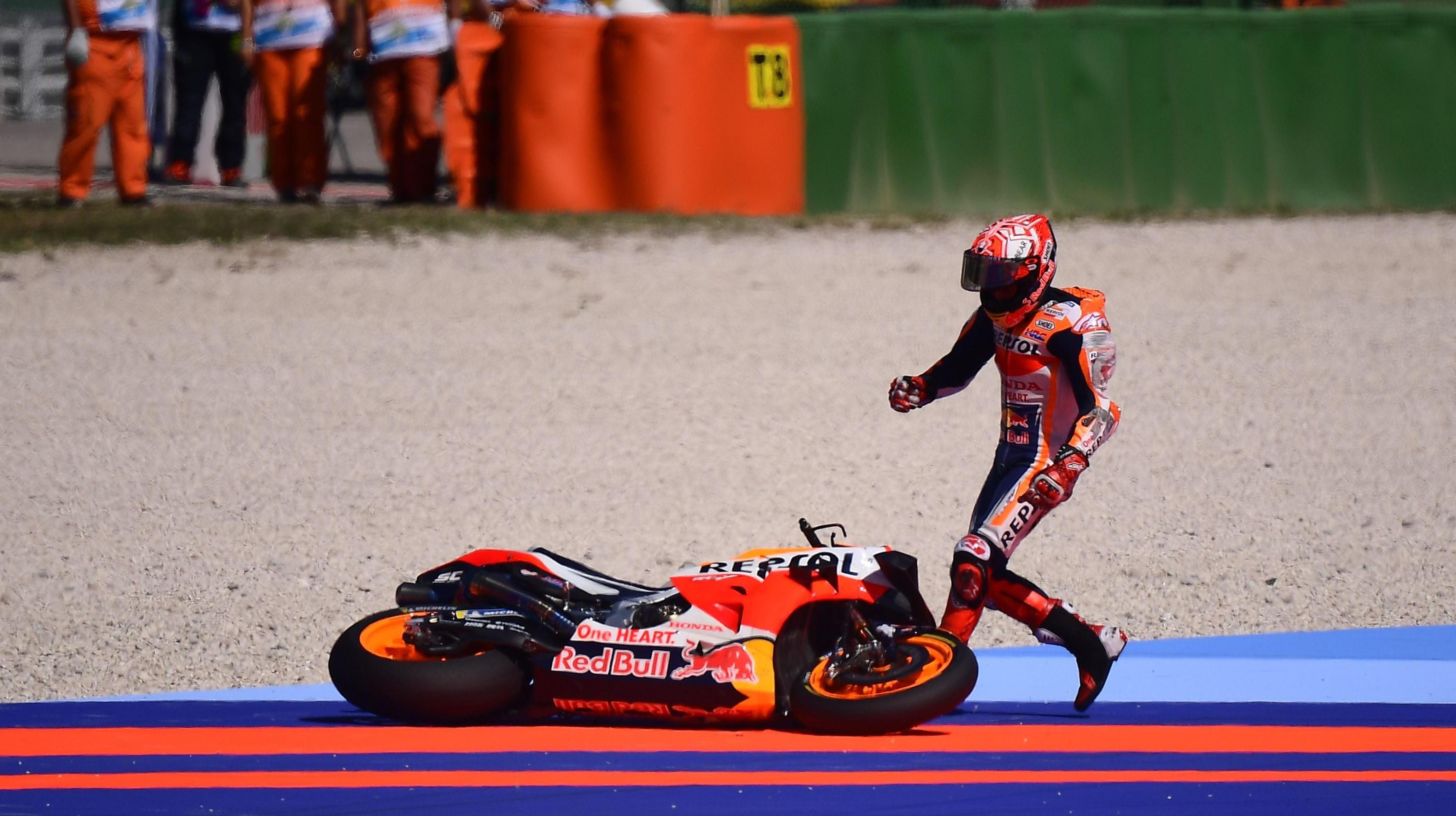How To Recover From Dropping Your Bike
Every once in a while, a rider drops a bike. Here's what to do and how you can also soothe that bruised ego.
It's one of the first things you learn when you take an introductory motorcycle safety class or your MSF: What to do if (and when) you drop your bike. Because chances are you're going to drop it, at least once. My instructor, a few cold springs ago, was very firm in her directives on how to approach this situation. If you drop your bike, you immediately jump out of the way. Do not attempt to catch it. Then hit the kill switch.
Simple directions to execute. But what about the after, or the "getting back on the bike" part?
The first time I dropped a bike was during my MSF course. I did a classic, common mistake which has caused me to drop three other bikes of my own, each only one time, yet always in the same manner. The drop stemmed from me losing my balance while at a stop simply because the front wheel/fork was turned. I was also on some kind of incline or decline. Every. Single. Time.
When I dropped that very worn and tired 1991 Kawasaki Eliminator during class, I made sure to follow those recovery instructions. I jumped out of the way as the old motorcycle hit the pavement. I dove in and hit the kill switch. Then, I quickly jumped back up to a standing position, with my hands in the air like I had just finished a Broadway musical number and yelled, "I did it!" You can ask my husband, it was a sight to see.
In this instance and for the remainder of the class, the instructors would pick up your bike, inspect it, and then hand the bike back to you. Sometimes, it was as simple as jumping back on the bike and completing an exercise. Sometimes, they'd ask if you were okay and give you time to be ready to get back on the bike. Honestly, it was a good lesson for the road ahead (or the road below...).
So now, let's break it down. Here's what you should do if you ever drop your ride:
Jump Out of the Way if You Feel You’re Losing Balance or the Bike
Motorcycles are heavy and typically weigh multiple times your weight. My air-cooled 2017 Ducati Scrambler Sixty2 is about 3.5 times my weight, so around 400 pounds, wet. Trying to "catch" it from crashing to the ground is futile — my lack of upper body strength won't be able to catch or lift something like that easily. Attempting to lift your motorcycle incorrectly will guarantee you hurt yourself, pull something or even crush something trying to rescue your darling. Just get out of the way.
Hit That Kill Switch
Your bike may be in gear, or operating, and just hit the ground. To ensure your safety, it's best to shut it off, immediately. The kill switch is there for situations just like these.
Check That You’re Okay
Were you hurt? Bruised? Will you need medical help or attention? Are you shaken up? It's OK to take a break and breathe a little before attempting to pick up your bike.
Pick Up Your Bike
Bringing your particular ride to the proper, upright riding position is going to be an event. First things first, do not try to pick it up like you would a box, child... you will hurt yourself. There are several recommended techniques by experience riders you can find on the web, or ask an experienced rider or instructor for guidance. You can always set your bike down on its side (carefully) for practice.
Is Your Bike Okay?
I happened to drop my bike quite recently (yes on a slope with my wheel turned), and had I checked over my bike once it was up, I would have noticed my shifter was considerably towed in towards the bike, about 1.5 to 2 inches. A few miles down the road, I pulled off to the side and set my hazards on so I could troubleshoot and hopefully fix my shifter. I was able to bend that shifter every so slightly — enough for it to be functional and shift enough to get me home. Had I initially looked over the bike, I could have just limped it home.
Anyway, checking over your bike when it is finally upright is good practice and allows you to take into account anything that may be out of place, severely mashed, or springing leaks. In my case, I ended up with a bent shifter, a scraped up clutch bar, and a little scratch to the swing arm. My ABS error light is on, too. But all are fixable, and honestly, it could have been so much worse.
Get Back to Riding
Dropping your motorcycle is embarrassing. But you know what? It's OK. Some of these accidents are a result of a simple mistake, or even a lack of practice, and everyone makes them at one time or another. That makes getting back on the bike so important in continuing to grow as a rider.
Maybe you need to practice some turns or other tight maneuvers in order to become better acquainted with your bike. Maybe you just need to be mindful of how you stop your bike, or understand the limits of where your wheels or body are turned at a stop. So, find a parking lot, set up some cones or mental parameters, and practice! If you're nervous about riding, practicing is ok and recommended. The more you know you can hit a turn, or not drop the bike, the better your future rides will be.
I know I'll be doing some practice laps once I fix that shifter. Oh how the mighty have fallen, quite literally.
